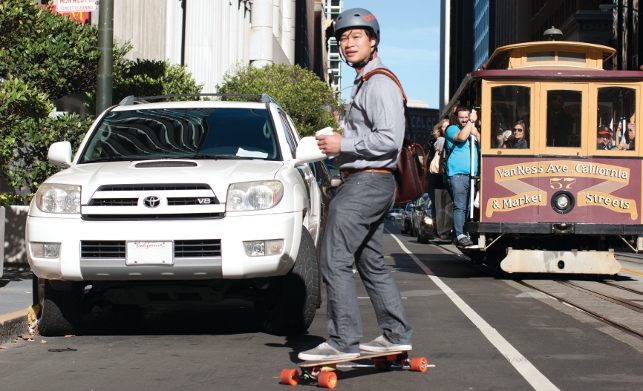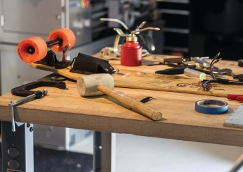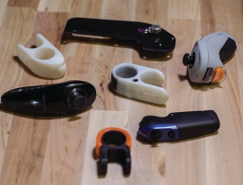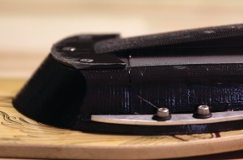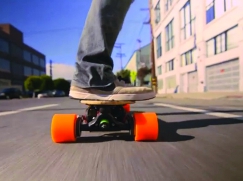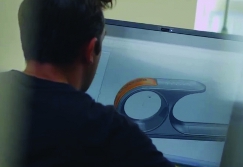Stanford University mechanical engineering student John Ulmen created his own ingenious means of getting around campus without exerting very much energy – an electric powered longboard.

Boosted Boards co-founder Matt Tran riding one of the prototypes in San Francisco
Cruising from his car onto campus and then between classes he can easily pick up the board and take it with him wherever he goes. Realising that this invention was too good not to share Ulmen, together with fellow mechanical engineering students Matt Tran and Sanjay Dastoor, founded Boosted Boards.
“We started with something that is already very efficient – the longboard. We then used really efficient motors and batteries and designed custom electronics and software to create the lightest electric vehicle that has ever been made,” describes Dastoor.
The result of almost two years work is a 12 pound (5.4 kg) longboard that features twin brushless electric motors, battery pack and drivetrain providing 2,000 watts of power and a six mile range on a single charge, which can be done in less than two hours using a standard wall socket.
The rider can reach a top speed of 20mph, even up 15 per cent grade hills. If they run out of charge or just feel like pushing, the board can be used like a normal longboard. A handheld remote allows for acceleration and braking.
“We’ve managed to build an electric powered drivetrain that only adds four pounds onto a normal eight pound longboard but it has enough power to go up the famous San Francisco Russian Hill at 20 mph,” describes Tran. “Boosted Boards are really revolutionary because of the power you get from something so light and portable.”
Motor heads
Ulmen created his original prototype following research he had been doing at university into electric motors.
He noticed that as their power was increasing so their price was decreasing, making inventions like his much more affordable. “The best part about the RC brushless motors and battery pack we used in our first prototype is that we bought them from a toy store. They were inside a remote controlled aeroplane,” smiles Dastoor.
Their bid to use as many off-the-shelf components as possible also extended to the longboard itself and being longboarders they knew exactly who to turn to.
A partnership with Loaded Boards, a Californian high performance longboard manufacturer, soon ensued providing the deck and wheels.
“It was important to us that the Boosted Board looks like a longboard and it really does from above because the drivetrain is so compact,” says Tran.
The very first longboard prototype Ulmen created for his own use was modelled using SolidWorks. All subsequent refinements to the drivetrain including the kinematics were also modelled and simulated in the software.
“There are a lot of clearance issues with the drivetrain,” explains Tran. “Normal longboards have wheel bite, where the wheel hits the deck of the board and it can make the rider come to a stop pretty quickly.
With our electric longboard we have something called motor bite. So with the motors connected to the truck, which is on the part that holds the axle of the wheels, when that part moves independently of the deck and if you are turning really hard that motor can hit the bottom of the deck and cause it to stop abruptly.”
Set up shop
The first prototypes were paid for through the trio’s own savings.
They were then lucky enough to get some seed funding from incubator initiatives – Y Combinator and StartX – which helped pay for a membership to TechShop.
This US-only initiative, which was founded in California and now consists of six TechShops at different locations, provides fully equipped workshop facilities and an array of tools that members can use to develop their designs and prototypes. Boosted Boards actually rented a small room at the San Jose TechShop last summer where they kept all their tools and inventory.
“At TechShop you don’t only have access to all these machines that you wouldn’t be able to afford otherwise, but it also brings a creative community together. Just seeing other people’s projects and what’s possible inspires your own,” says Tran.
“I often hear people talk about how manufacturing has moved overseas and how designers are no longer connected to that process and know what’s possible to achieve through manufacturing. So a place like TechShop is pretty awesome because it really connects you back to the manufacturing process because you are actually there doing it.”
Talk the talk
Creating the best electric longboard that has ever been invented is no small feat and the team decided to draw on the experiences of those who knew what they were talking about.
One of these was a former engineer at Tesla Motors, a manufacturer of electric vehicles, who came onboard as a mentor.
“Having that kind of mentor is really key because the experience they have in actually bringing something to market makes it way easier to avoid some of the mistakes that most hardware companies do when they are starting out,” says Dastoor.
The technology the Boosted team were using is similar to that found in modern electric cars and motorbikes but on a much smaller and lighter scale.
The constant refinements and alterations to their designs resulted in about five prototype boards being built. But as Tran explains, each one of these kept changing as new components and different iterations were tried out.
“We didn’t have brakes on our first prototype and the acceleration was jerky at first because we didn’t have encoders or sensors to provide for the wheel speed and position. So we basically developed our own electric speed controller which means that the board can accelerate smoothly from a stop. We’ve also added regenerative braking making it easier to learn because now you can control your speed and come to a complete stop even going downhill all while recharging the battery,” explains Tran.
They were also working on a design for a remote control and were initially planning a handheld remote with a thumb wheel for throttle and braking.
However, having tested the design through a process of 3D modelling and 3D printing, they chose a ring-style controller that features a wheel for the throttle and brake as well as a battery indicator to show how much power is left.
Kick in the right direction
Once happy, five prototypes were made to sell to paying customers.
“One bit of advice we were given at the beginning of the project was to sell a few of the products to paying customers to make sure that people thought they were worth the money,” says Tran.
“All five unanimously said at the end of the summer that the boards were really awesome and they would have paid more for them. It was also great to get their feedback and incorporate it into later prototypes.”
The next step was to launch a Kickstarter campaign, something they had decided on from the start.
Although they did need the funding, it wasn’t all about the money. “We had some friends who had done Kickstarter successfully and it was great confirmation that people actually want to buy your product,” says Tran.
“Kickstarter also provides a really good way of promoting your product. It’s pretty amazing that a start-up can get so much publicity right from the get go. In the past it would have been a lot tougher to get people to see and become interested in what you are doing.”
On 11 September 2012 the Boosted Boards Kickstarter campaign was launched with a target of raising $100,000. Exactly one month later the campaign ended with a huge $467,167 pledged by backers.
The rewards varied from $1 for a sticker to $10,000 for up to 15 personalised boards. As they had been advised to ramp up production slowly and carefully, the rewards reflected this with backers being able to buy a board from the 25 batch beta production run in March 2013, first production run in May 2013, second batch in June 2013, or third in July 2013. With so much interest, the boards can also be pre-ordered directly from the Boosted Boards website for $1,299.
So, with work to be done it was time to move out of their room in TechShop and find bigger facilities. They moved into a 5,000 square foot building in Sunnyvale, California, with a fellow robotics company, Double Robotics, where they would share a machine shop that included a CNC mill, manual mill and lathe, laser cutter, 3D printer, band saws, drill press and lots of hand tools. There was also a large room that could be used for the assembly of the boards.
They also expanded their team with three new members who importantly all share the founder’s passion for the product. “In a small company and with a small project like this you know that what comes out is how much work you’ve put into it whereas in a larger company you can sometimes feel lost being a small cog in a big wheel,” comments Tran.
Tweaking the design
Work on the design continued and although initially an off-the-shelf lithium battery pack was going to be used, Boosted Boards has since partnered with a custom battery manufacturer that is providing custom packs with an advanced battery management system.
This will result in more charge cycles, higher safety, and even the potential for faster charging.
Other improvements include a redesigned truck to accommodate different pulleys and belts, which connect the motors to the wheels. This will minimise slip on steep hills, something that became apparent from their prototype boards that had been ridden heavily for a year.
They had also been using off-the-shelf motor controllers that they have tuned to work with the prototype boards. However, following feedback received, they have since decided to design their own custom controllers to provide the smoothest acceleration, braking and throttle feedback.
The user also now has the ability to go in reverse. Simultaneously, new features have been added to the remote design including a kill switch on the bottom for user safety.
Boosted Boards recently finished assembling the first five beta boards, which have been delivered to the Kickstarter backers, all of which are located in the San Francisco Bay area.
These backers had to be local as their feedback is a crucial step towards the development of the production units. The remaining 20 beta boards will be manufactured in two further batches.
As production is being ramped up slowly, feedback from these beta batches as well as those from the first and second run will help the Boosted team continue to improve on the design until it’s perfect and ready for mass production.
“Once we have the production process down in-house then we’ll start to work with contract manufacturers to replicate that process and ramp up to really large volumes,” comments Tran.
Although delivering the world’s lightest electric vehicle is certainly an exciting prospect, according to Dastoor this project is part of a longer term vision to revolutionise personal transportation.
“We really think that the powertrain we’ve developed will allow us to reimagine what a vehicle can be especially when you think that a Boosted Board can run for 1,000km on only $1 of electricity.” 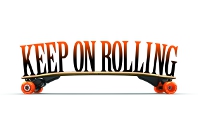
Design technology brings dream of electric powered longboard to reality
Default

